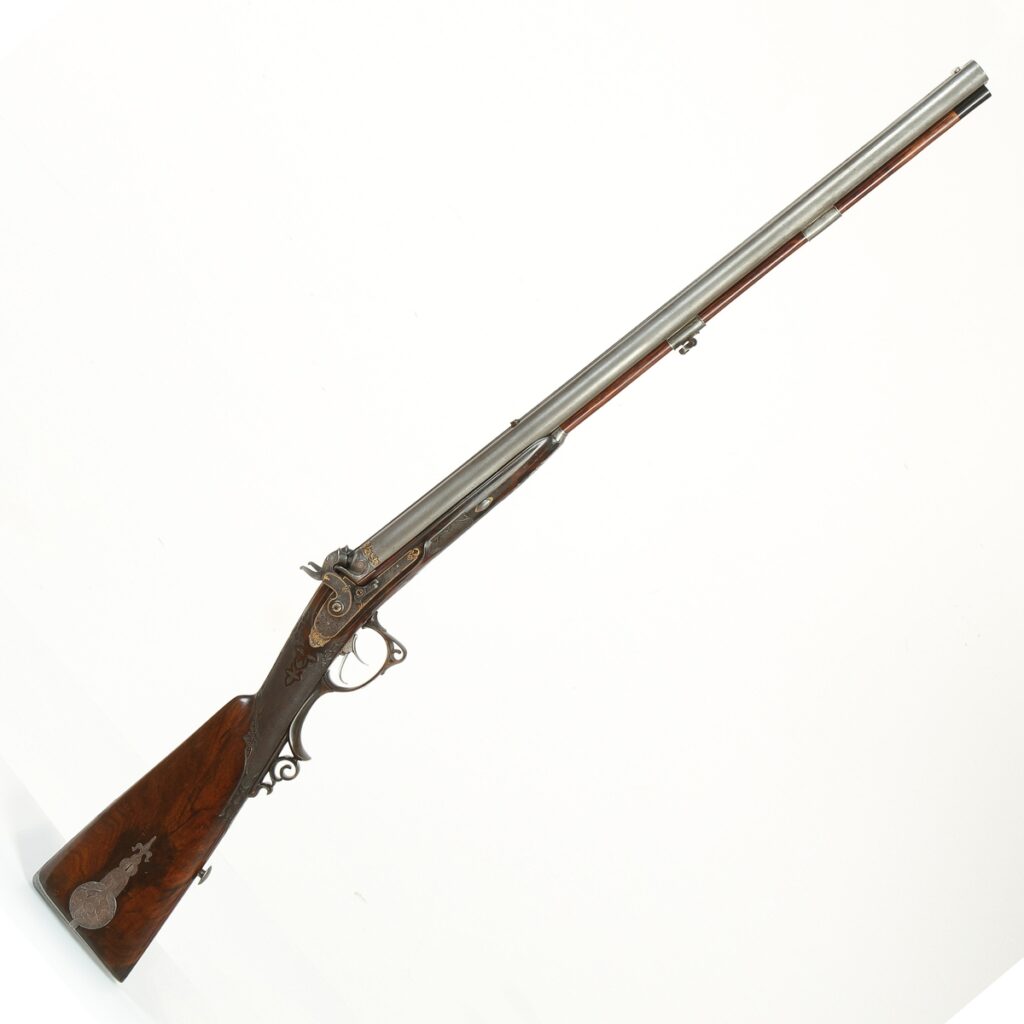
05 Double-barreled Percussion Rifle, A. V. Lebeda, Prague, 1852. Hunting Rifle of Austrian Emperor Franz Joseph I (1830−1916)
Fotogalerie
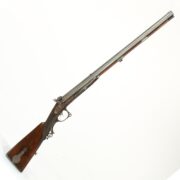
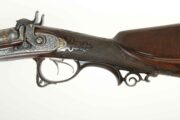

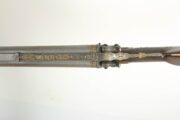
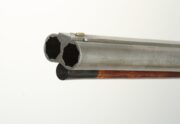
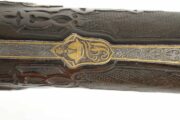

When Emperor Franz Joseph I visited Prague in May 1852, the festive programme included a visit to Prague’s sharpshooters and shooting competitions on Strelecky ostrov (Shooting Island). On this occasion, Antonin Vincenc Lebeda, a world-famous Prague gunsmith whose company had for years supplied the highest quality weapons to high-ranking personalities and rulers all over the world, was introduced to the Austrian ruler. It was probably not their first meeting, because shortly after his accession to the throne, the Emperor placed his first order with Lebeda. On 6 July 1849, the newspaper Bohemia reported that the monarch, who was in Prague at the time, gave Lebeda a diamond ring with his monogram in return for the delivery of a hunting double-barreled rifle.
On Strelecky ostrov, the Emperor was so impressed by the level of Lebeda’s weapons that he made a really impressive order for his armoury for twelve percussion double-barreled guns, six double-barreled rifles and over and under double-barrelled rifles. These weapons were preserved in the Imperial Armoury until the end of the Habsburg Monarchy. However, afterwards, some of them were sold off on the open market, and those that were not became part of the collections of the world’s museums and are still on the open market today as highly valuable collectors’ items. In May 2020, one of the six Emperor’s doubles was also purchased for the collection of the Military History Institute in Prague.
The luxury hunting rifle has grooved barrels made of pink damascus steel, which are placed side by side, have a circular cross-section and a calibre of 17 mm. The decoration is concentrated on the rear part of the centre rail. These are engraved and gilded arabesque ornaments between which the signature of the manufacturer of the weapon “ANT:VINC:LEBEDA” was done in Neo-Gothic script. The band of arabesques extends to the bottom bolt, and between them in the oval is the numeral 6, the serial number of the weapon within the series of identical rifles. A deer motif dominates among the roosters and the owner’s monogram “FJ” is on the deadbolt of the barrel under the imperial crown in the cartouche.
The side percussion locks have flat lock plates decorated all over with an engraved motif of tendrils with leaves. On the right lock plate is an engraved motif of a fox in the front part, and on the left one a motif of a lying pig. The first part of the signature “Lebeda” is gilded on the back of the right lock plate, while the back of the left plate continues with “in Prague”. The engraving on both lock plates is bordered with a gilded line and small arabesques. Similar decorations are also on the cocks. There are swivel locks on both lock plates.
In the stock, behind the trigger guard, the serial number of the weapon 3549 is engraved on the fitting plate. This seemingly vague information is very important for the correct dating of other weapons made by Lebeda. There is a large number of those known worldwide, but only a bare minimum of them also bears their year of manufacture. Lebeda’s weapons were numbered continuously in a single ascending series, regardless of the design or type of weaponn. This single series includes long and short guns, pistols, revolvers, shotguns and rifles, flintlock and percussion lock guns, as well as modern Lefaucheux and Lancaster designs.
Each gun had its own serial number, even if it was a pair or set of ten or twelve identical hunting rifles. And there are only a few pieces in this entire line for which we can assign an exact year of manufacture to a specific serial number. Thanks to the known context of its creation, we know that the hunting double-barrelled rifle for Franz Joseph I with serial number 3549 was probably produced in Lebeda’s workshop in 1852 or, given the scale of the imperial order, in the following year at the latest. The fact that the serial number is correct on this weapon is confirmed by another of the set of six imperial doubles with serial number 3547 having been auctioned as a highlight at the Hermann Historica autumn auction in November 2019.
Length 1,040 mm, barrel length 640 mm, calibre 17 mm, weight 3,688 g.
Aktuálně

Prosinec 1944 – oficiální vydání prvních poštovních známek osvobozeného Československa
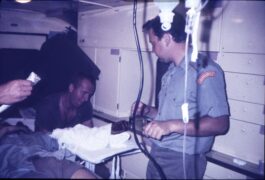
Českoslovenští zdravotníci ve válce v Zálivu

Výzkum u českých krajanů v Chorvatsku
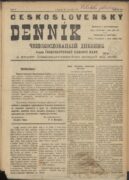
Československý deník sehrál v životě legionářů v Rusku velmi důležitou roli. Poprvé vyšel v prosinci 1917








